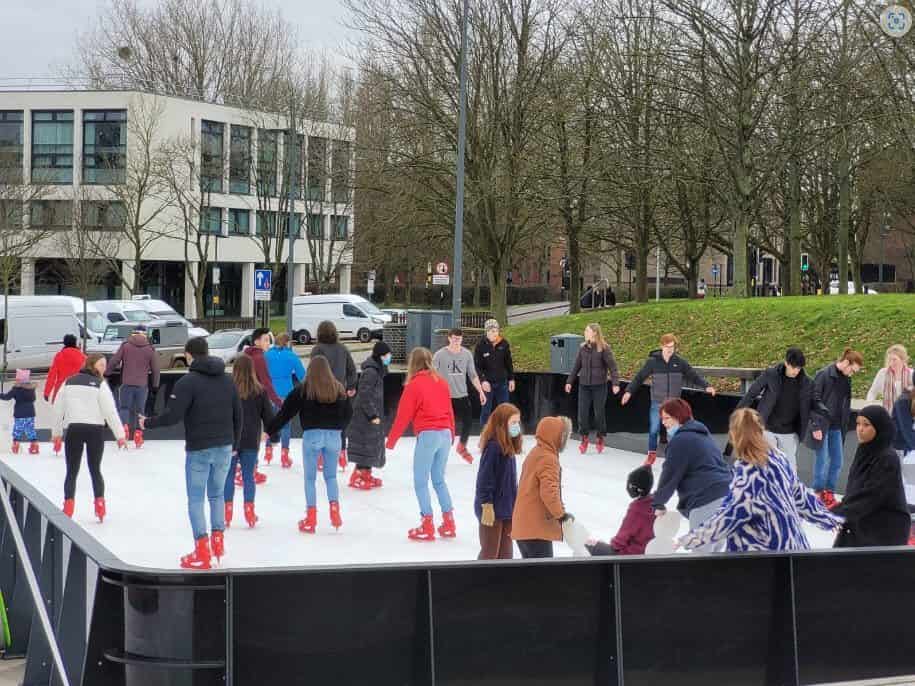Ice Skating Safety 101 The Basics
Ice skating is a popular activity that can be enjoyed by people of all ages. Whether you are a seasoned skater or just starting out, it is important to take the necessary safety precautions to protect yourself from potential injuries. In this comprehensive guide, I will cover everything you need to know about ice skating safety, from understanding the risks to proper techniques and essential gear.
Ice skating is a sport that has been around for centuries, with its origins dating back to Scandinavia in the 10th century. Today, it has become a popular pastime for people all over the world, with millions of people hitting the ice rink each year.
Ice skating offers a range of benefits, including improved cardiovascular health, increased strength and endurance, and a boost in mental health. It is also a fun and social activity that can be enjoyed with friends and family.
However, with the excitement of ice skating comes the potential for injuries. It is important to understand the risks involved and take the necessary precautions to protect yourself.
Understanding the Risks of Ice Skating
Ice skating can be quite hazardous if proper precautions are not taken. Some of the common risks associated with ice skating include:
- Falling: Falling is the most common ice skating injury. It can result in bruises, cuts, sprains, and even broken bones.
- Collision: Skaters can collide with each other or with objects on the ice, such as the boards or the Zamboni.
- Overuse injuries: Skating puts a lot of stress on the lower body, which can lead to overuse injuries like tendonitis and stress fractures.
- Hypothermia: Cold temperatures can cause hypothermia, a dangerous condition that occurs when the body loses heat faster than it can produce it.
Safety Precautions to Take Before Hitting the Ice Rink
Before heading to the ice rink, there are several safety precautions you should take to protect yourself:
- Check the weather: If you are planning to skate outdoors, check the weather forecast beforehand. Avoid skating on thin ice or in extreme weather conditions.
- Dress appropriately: Wear warm, layered clothing that is easy to move in. Avoid wearing loose clothing or scarves that can get caught in blades.
- Get the right gear: Wear a properly fitting helmet, gloves, and knee and elbow pads. For outdoor skating, wear a pair of waterproof boots with good traction.
- Stay hydrated: Drink plenty of water before and during skating to prevent dehydration.
- Warm up: Do some light stretching and warm-up exercises before hitting the ice.
Essential Ice Skating Gear and Equipment
Ice skating requires specific gear and equipment to ensure your safety and comfort. Here are some essentials to consider:
- Skates: Choose skates that fit well and provide proper support. Make sure the blades are sharp and free of rust.
- Helmet: A helmet can protect your head from injury in the event of a fall or collision.
- Knee and elbow pads: These can prevent bruises and serious injuries in case of a fall.
- Gloves: Gloves can protect your hands from cold and injury.
- Clothing: Wear warm, comfortable, and flexible clothing that allows for easy movement. Avoid loose clothing that can get caught in the blades.
Proper Techniques for Ice Skating to Avoid Injuries
Proper techniques are essential for preventing injuries while ice skating. Here are some tips to keep in mind:
- Keep your knees slightly bent and your weight centered over your feet.
- Use your arms for balance and to help you turn.
- Keep your head up and look ahead, not down at your feet.
- Avoid crossing your feet or leaning too far forward or backward.
- Skate in the same direction as the other skaters, and follow the flow of traffic.
- Practice stopping techniques, such as the snowplow stop or the T-stop.
Common Ice Skating Injuries and How to Prevent Them
Despite taking precautions and using proper techniques, ice skating injuries can still occur. Here are some common injuries and how to prevent them:
- Ankle sprains: Wear properly fitting skates and strengthen your ankle muscles with exercises.
- Wrist fractures: Use wrist guards to protect your wrists from injury.
- Head injuries: Wear a helmet to protect your head from impact.
- Cuts and bruises: Wear protective gear and avoid sharp turns or sudden stops.
Safety Guidelines for Ice Rinks and Outdoor Skating Areas
Ice rinks and outdoor skating areas should follow strict safety guidelines to ensure the safety of all skaters. Here are some guidelines to look out for:
- Proper maintenance of the ice surface: Ice should be smooth and free of cracks, holes, or debris.
- Access to first aid: There should be a first aid kit and trained personnel available in case of injury.
- Proper lighting: Skating areas should be well-lit to prevent collisions and falls.
- Traffic flow: Skaters should follow the flow of traffic and avoid skating in the opposite direction.
Tips for Ice Skating with Children
Ice skating with children can be a fun and rewarding experience, but it requires extra precautions. Here are some tips to keep in mind:
- Choose a rink or area that is appropriate for children and has a designated children’s area.
- Ensure that your child wears proper gear and protective equipment.
- Supervise your child at all times and stay within arm’s reach.
- Teach your child proper skating techniques and how to stop safely.
- Take frequent breaks to prevent fatigue and dehydration.
Emergency Procedures and First Aid for Ice Skating Injuries
In the event of an injury, it is important to know the proper emergency procedures and first aid techniques. Here are some tips:
- Call for medical assistance if the injury is serious.
- Keep the injured person still and calm.
- Apply pressure to any bleeding wounds.
- Use ice or cold compresses to reduce swelling.
- Administer CPR or use an automated external defibrillator (AED) if necessary.
Conclusion: Emphasizing the Importance of Safety While Ice Skating
Ice skating can be a fun and rewarding activity, but it is important to prioritize safety. By taking the necessary precautions and using proper techniques, you can prevent injuries and enjoy a safe and enjoyable skating experience.
Remember to always wear the proper gear, stay hydrated, and follow the rules and guidelines of the skating area. With these tips in mind, you can make the most of your ice skating experience while keeping yourself and others safe.



